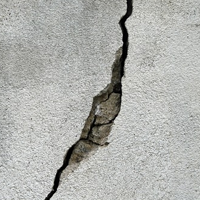Importance of Sealants for Waterproofing and Leakage Prevention
- 12 June 2015
- Posted by: Madhuraka
- Category: Article
 Water loss from leakage is as much a concern as the area or item damaged or deteriorating because of leaks and moisture build up. A small leak in a water tank, for example, can create big water losses and high bills, and reduce the available water capacity in the tank.
Water loss from leakage is as much a concern as the area or item damaged or deteriorating because of leaks and moisture build up. A small leak in a water tank, for example, can create big water losses and high bills, and reduce the available water capacity in the tank.
There is a variety of waterproofing sealants on the market to protect interior wall and floor areas and drainage as well as areas subject to exterior drainage.
Preventing Interior Leaks
Waterproofing is applied and leaks are fixed by caulking. Caulking is the sealing process that uses ready-mixed materials such as silicone, polyurethane, polysulfide, or polyurethane and acrylic sealant. These sealants are made of elastomeric (flexible) materials that allow joint expansion / contraction without compromising the seal. When applied, silicone sealants form water-tight, durable seals. Silicone sealants are commonly used to keep the weather out waterproof kitchen and bathroom corners. They generally are not painted, although some may be, with either water or oil-based paints.
Many multi-purpose co-polymer sealants are water-resistant, clear, and contain fungicides to prevent mold buildup. They form flexible films that do not dry out or crack. They may be painted with oil or water based paints.
The potential for leaks will commonly be found in building basements. Cracks in concrete foundations and around pipe entries into the building are seepage points. Interior epoxy and urethane seals are injected under pressure into the cracks and openings. The pressure injections go through the wall to the exterior, cutting off any seepage entirely.
Interior sealants effectively prevent high humidity trapped inside the basement from being absorbed into porous masonry. Masonry that experiences spalling (the continued exposure to moisture and high humidity) will eventually deteriorate. Interior sealants are not effective against water penetration under hydrostatic pressure in masonry foundations.
Preventing Exterior Leaks
Waterproofing is necessary whenever a structure is built at ground level or below. High water tables cause hydrostatic pressure to be forced through cracks in foundation walls and under basement floors. This results in significant structural damage to the foundation and walls including decay, mold, and moisture problems.
Concrete water tanks may be sealed from inside or outside. Sealants are cement–based, and specifically designed to waterproof concrete and masonry. Industrial applications include reservoir and dam repairs, animal feeding troughs, and waterproofing swimming pools, and other concrete and masonry structures under continual (water) pressure.
Formulated sealants are used to seal expansion / construction joints in vertical and horizontal surfaces. Expansion joints may be internal or external. Epoxy sealant is used to moisture seal a wood or timber floor installed over a concrete slab. The moisture barrier protects the wood flooring from decay and deterioration.
Rooftops must also be waterproofed / sealed to keep moisture and weather out. Premium grade roof membranes are installed to protect from the most severe weather conditions. They are a superior sealed waterproofing solution for leaks and seepage through crevices caused by rain and storms. All materials are designed, installed, and applied to protect the roof so it may endure prolonged concentrations of rainwater as well as harsh UV conditions.

